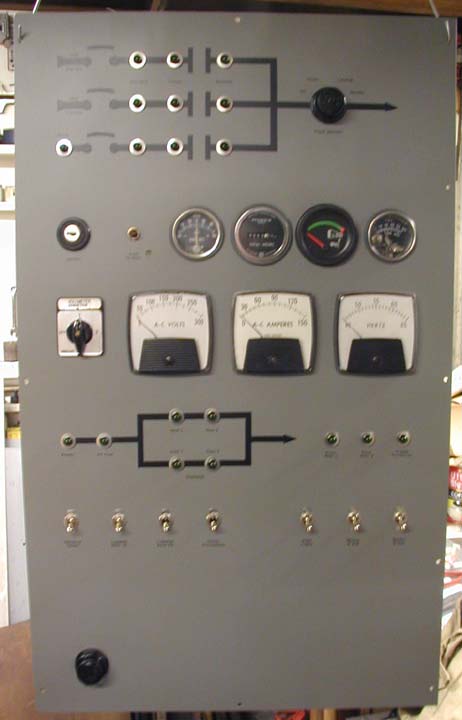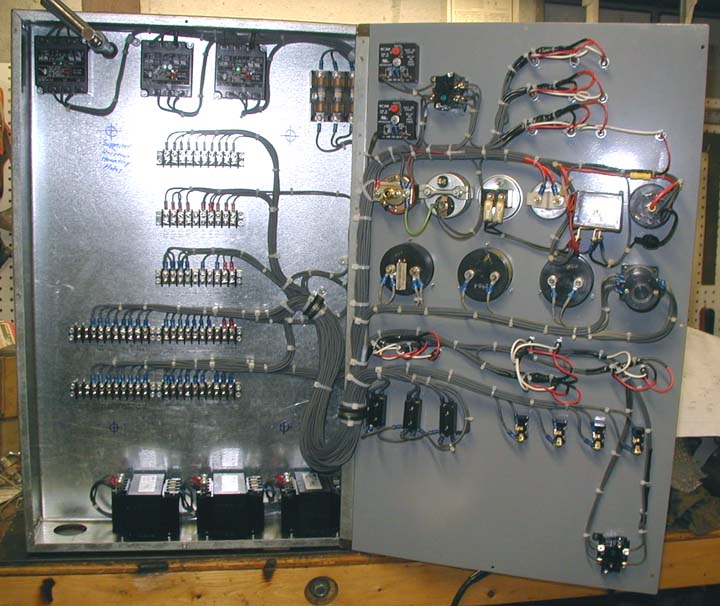
|
|
After determining the physical space constraints for the control panel,
and how it will be mounted, where the wiring will enter the box, etc.,
CAD drawings are prepared and sent for the customer's OK. In this case,
the customer specified the box dimensions and door location so that the
box would bolt right to the unistrut on the wall of the car's electrical
locker. From the drawings, a large, galvanized steel box is fabricated
that will house all of the control panel components. The control panel
front will be hinged, with a piano hinge, from the tab on the right (or
left, if you prefer) of the box, for easy access to all of the
components.
Photo by E. Wilde, |







